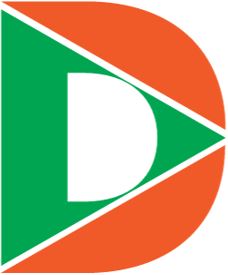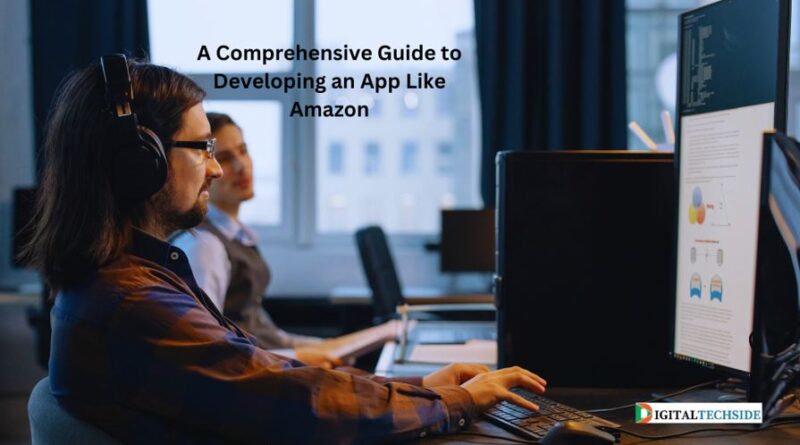A Comprehensive Guide to Developing an App Like Amazon
Introduction:
E-commerce Big companies Guide to Developing an App Like Amazon has changed how we shop in the rapid online world, setting the standard for simplicity as well as user experience. The business environment has more thoroughly changed due to the popularity of mobile apps nowadays, so businesses must now develop and adapt quickly. If you’re thinking about developing an app like Amazon, this complete blog will definitely help you through all the features, techniques, and tactics you need to succeed in the highly challenging e-commerce market.
Understanding the Market:
Before diving into the development process, it’s very crucial to understand the dynamics of the e-commerce market. Amazon’s success is built on customer-centric principles, a vast product catalog, seamless user experience, and robust logistics. Analyzing market trends, identifying target audiences, and studying competitors will provide valuable insights to shape your app’s development strategy.
Key Features to Include:
User-friendly Interface:
Develop an intuitive and visually appealing interface. Amazon’s success lies in its clean design and straightforward navigation, ensuring users can find what they need effortlessly.
Personalized User Accounts:
Implement a user account system to enable personalized experiences. Users should be able to save preferences, track orders, and receive personalized recommendations based on their browsing and purchase history.
Product Listings and Search Functionality:
Create a robust product listing system with high-quality images, detailed descriptions, and multiple filtering options. An efficient search functionality, possibly incorporating machine learning algorithms, helps users quickly find what they’re looking for.
Secure Payment Gateway:
Integrate secure and user-friendly payment gateways to facilitate seamless transactions. User a seamless experience is increased by offering a lots of payment options, such as digital wallets, credit/debit cards, and other popular systems of all kinds.
Review and Rating System:
Make it possible for clients to provide feedback and review products, supporting content generated by users. While poor feedback can provide insightful information for improvement, positive reviews increase confidence.
Wishlist and Cart Management:
Allow users to create wishlists for future purchases and manage their shopping carts effortlessly. To improve the entire shopping experience, add good features like notifications and real-time shopping cart updates.
Push Notifications:
Keep users engaged with timely push notifications, informing them about order updates, promotions, and personalized recommendations. Striking a balance between informative and non-intrusive notifications is crucial.
Social media integration:
Integrate social media platforms to facilitate easy sharing of products and reviews. This not only expands your app’s reach but also leverages social proof for marketing.
Development Process:
Choose the Right Technology Stack:
Select a technology stack that aligns with your app’s requirements. Popular choices include React Native for cross-platform development or native development for iOS and Android.
Backend Development:
Build a robust backend infrastructure to handle user data, product listings, and transactions securely. Consider cloud services like AWS or Azure for scalability and reliability.
Database Management:
Opt for a database management system that ensures fast and efficient data retrieval. MySQL or MongoDB are commonly used for e-commerce applications.
Payment Gateway Integration:
Collaborate with trusted payment gateway providers to ensure secure transactions. Stripe, PayPal, and Braintree are popular choices.
API Integration:
Integrate third-party APIs for features like location tracking, social media login, and analytics. Ensure seamless communication between different components of your app.
Security Measures:
Implement robust security measures to protect user data and financial information. SSL/TLS encryption, secure authentication, and regular security audits are essential.
Scalability:
Design your app with scalability in mind to accommodate potential growth. This involves optimizing code, utilizing cloud services efficiently, and planning for increased user traffic.
Testing and Quality Assurance:
User Testing:
Conduct thorough user testing to identify and rectify any usability issues. Gather feedback from diverse user groups to ensure your app caters to a broad audience.
Performance Testing:
Test your app’s performance under different conditions, ensuring it remains responsive and stable even during peak usage.
Security Audits:
Engage in rigorous security audits to identify vulnerabilities and address them promptly. Regularly update security measures to stay ahead of potential threats.
Marketing and Launch:
Pre-launch Marketing:
Create a buzz before the official launch through teasers, social media campaigns, and exclusive previews. Leverage influencers and early access promotions to build anticipation.
App Store Optimization (ASO):
Optimize your app’s listing on app stores with relevant keywords, engaging visuals, and a compelling description. This improves visibility and encourages downloads.
Post-launch Marketing:
Sustain momentum post-launch with ongoing marketing efforts. Utilize social media, email marketing, and partnerships to reach a wider audience.
Customer Support:
Provide excellent customer support to address user queries and concerns promptly. A responsive support system contributes to positive user experiences and fosters loyalty.
Continuous Improvement:
User Feedback Analysis:
Regularly analyze user feedback and app performance metrics. Use this data to identify areas for improvement and implement updates accordingly.
Feature Enhancements:
Stay abreast of market trends and continuously enhance your app with new features. Regular updates keep users engaged and attract new audiences.
Adapt to Emerging Technologies:
Embrace emerging technologies such as augmented reality (AR) or virtual reality (VR) to enhance user experiences and stay ahead of the competition.
Conclusion:
Developing an app like Amazon requires a strategic approach, attention to detail, and a commitment to user satisfaction for all customers are most important. By understanding the market, incorporating essential features, following a very careful development process, and implementing effective marketing strategies, you can position your app for success in the competitive e-commerce landscape. Remember, continuous improvement and adaptability to evolving technologies are the most important factors in sustaining long-term success.

As a DIGITALTECHSIDE author, the majority of our articles have been focused on technology, blogging, business, lifestyle, social media, web design and development, e-commerce, money, health, education, entertainment, SEO, travel, and sports.
Contact us at digitaltechside@gmail.com if you have questions of anything.




